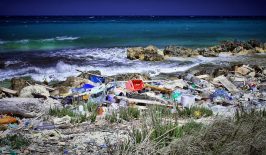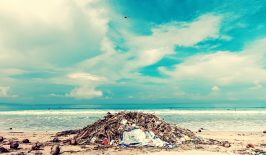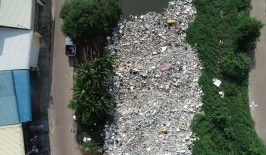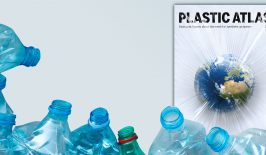Although there have been large scale and much publicised attempts to clear plastic from the ocean, such as the Ocean Cleanup project, a much more efficient method is to catch it before it even gets that far. A Dutch startup has now developed a simple, yet effective method of doing just that.
The Amsterdam-based Great Bubble Barrier has, as the name suggests, harnessed the power of bubbles to catch plastic flowing down canals and rivers. The idea itself is relatively straightforward and builds upon methods used by the oil and dredging industry. Simply put, a perforated rubber tube is run along the bottom of waterways, which then has ambient air pumped through it. This rises to the surface as bubbles which catch and block even small pieces of plastic making its way downriver. Due to the diagonal placement of the tube, the plastic waste is pushed to the edge of the waterway where it is then caught in a catchment device. Currently, the pipes can be laid at a depth of up to seven metres, which is more than sufficient for many European canals and waterways. However, the team is looking at going even deeper.
The design of the Bubble Barrier means it can be left 24/7 to do its work with only minimal maintenance, while, in ideal weather situations the air pump itself can be powered by renewable energy. The bubbles also cause no interference with normal river traffic or aquatic life. In fact, according to the Great Bubble Barrier, by pumping in more air, the dissolved oxygen content of the river is increased, promoting algae growth and benefitting the aquatic ecosystem. In any case, the barriers also include ‘fish passage sections’ in each of its designs.
Of course, each riverway is different, and The Great Bubble Barrier aims to work with local governments and authorities to tailor its barrier and the catchment devices to the specific flow and details of the river in question.
Trials at the Deltares research institute have suggested the Great Bubble barrier can catch approximately 70-80 percent of top-surface plastic, and around 50 percent of underwater plastic. It is generally able to capture all types of plastic of at least 1 millimetre or bigger, although they are also looking into the possibility of using the technology to capture microplastics measuring from 20 to 500 micrometres. Unfortunately, plastic that has sunk and is rolling along the bottom of a river is unlikely to be caught.
Currently, the Great Bubble Barrier is undergoing a two year pilot project in Amsterdam at the important Westerdok. This is the point where several major canals converge and join the IJ – the Amsterdam waterfront, which then ultimately leads to the North Sea. Previously, other trials have been conducted in Wervershoof, in the IJssel river and in Berlin.
Where does plastic waste come from?
Statistically, around 80 percent of the plastic in the ocean originates from on land. Much of this then enters rivers which flow into the seas and oceans. The nature of rivers, with their predictable routes, narrow nature and relatively consistent flows means it is much simpler to capture plastic in the water at this stage, than once it has actually made it into the sea. Projects like the Great Bubble Barrier, with their low-maintenance and constant operation can almost create a kind of plastic-catching force field to stop waste ever getting that far.
However, although cleaning European canals and rivers is still a worthwhile task, the vast majority of ocean-bound plastic garbage in fact comes from only ten rivers worldwide. Eight of which are in Asia: the Yangtze, Indus, Hai He, Yellow, Pearl, Ganges, Amur and Mekong; and two in Africa – the Nile and the Niger. According to researchers, these ten rivers provide 90 percent of the plastic pollution in the ocean.
The bubble barrier technology as it currently stands would likely be ineffective in such large waterways. Although it could conceivably work in a river’s smaller tributaries, much of the trash which enters these rivers comes directly from communities and industrial facilities on their banks.
RESET has previously covered a range of other plastic-catching technology, such as waterborne-drones to patrol waterways, artificial intelliegence to spot the plastic and larger ‘Interceptors’ built within barriers.






